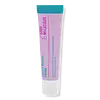What's inside
What's inside
 Key Ingredients
Key Ingredients

 Benefits
Benefits

 Concerns
Concerns

 Ingredients Side-by-side
Ingredients Side-by-side

Water
Skin ConditioningC13-16 Isoparaffin
SolventGlycerin
HumectantDiheptyl Succinate
EmollientHeptyl Undecylenate
Emollient1,2-Hexanediol
Skin ConditioningAmmonium Acryloyldimethyltaurate/Vp Copolymer
Polyglyceryl-10 Oleate
Skin ConditioningPropanediol
SolventVitis Vinifera
MaskingVitis Vinifera Seed Oil
EmollientCaprylic/Capric Triglyceride
MaskingBakuchiol
AntimicrobialTocopherol
AntioxidantAcmella Oleracea Extract
Skin ProtectingButylene Glycol
HumectantRetinol
Skin ConditioningAllantoin
Skin ConditioningHelianthus Annuus Seed Oil
EmollientCapryloyl Glycerin/Sebacic Acid Copolymer
Skin ConditioningEthylhexylglycerin
Skin ConditioningSalix Alba Bark Extract
AstringentCamellia Sinensis Leaf Extract
AntimicrobialLilium Candidum Bulb Extract
Skin ConditioningWater, C13-16 Isoparaffin, Glycerin, Diheptyl Succinate, Heptyl Undecylenate, 1,2-Hexanediol, Ammonium Acryloyldimethyltaurate/Vp Copolymer, Polyglyceryl-10 Oleate, Propanediol, Vitis Vinifera, Vitis Vinifera Seed Oil, Caprylic/Capric Triglyceride, Bakuchiol, Tocopherol, Acmella Oleracea Extract, Butylene Glycol, Retinol, Allantoin, Helianthus Annuus Seed Oil, Capryloyl Glycerin/Sebacic Acid Copolymer, Ethylhexylglycerin, Salix Alba Bark Extract, Camellia Sinensis Leaf Extract, Lilium Candidum Bulb Extract
Swiftlet Nest Extract
Skin ConditioningMacadamia Integrifolia Seed Oil
Skin ConditioningBeeswax
Emulsion StabilisingCetyl Alcohol
EmollientGlycerin
HumectantPolysorbate 60
EmulsifyingDipropylene Glycol
HumectantRetinol
Skin ConditioningSh-Oligopeptide-1
Skin ConditioningSodium Polyacrylate
AbsorbentAllantoin
Skin ConditioningPEG-100 Stearate
Adenosine
Skin ConditioningCarbomer
Emulsion StabilisingBetaine
HumectantPropylene Glycol
HumectantCaprylic/Capric Triglyceride
MaskingPolysorbate 20
EmulsifyingArginine
MaskingAlcohol
Antimicrobial1,2-Hexanediol
Skin ConditioningCeteth-3
EmulsifyingBrassica Campestris Sterols
EmollientTocopheryl Acetate
AntioxidantCetyl Phosphate
EmulsifyingCholesterol
EmollientPEG-5 Rapeseed Sterol
CleansingHydrogenated Lecithin
EmulsifyingEthylhexylglycerin
Skin ConditioningWater
Skin ConditioningSorbitan Sesquioleate
EmulsifyingCeteth-5
EmulsifyingDisodium EDTA
Glyceryl Stearate
EmollientParfum
MaskingSwiftlet Nest Extract, Macadamia Integrifolia Seed Oil, Beeswax, Cetyl Alcohol, Glycerin, Polysorbate 60, Dipropylene Glycol, Retinol, Sh-Oligopeptide-1, Sodium Polyacrylate, Allantoin, PEG-100 Stearate, Adenosine, Carbomer, Betaine, Propylene Glycol, Caprylic/Capric Triglyceride, Polysorbate 20, Arginine, Alcohol, 1,2-Hexanediol, Ceteth-3, Brassica Campestris Sterols, Tocopheryl Acetate, Cetyl Phosphate, Cholesterol, PEG-5 Rapeseed Sterol, Hydrogenated Lecithin, Ethylhexylglycerin, Water, Sorbitan Sesquioleate, Ceteth-5, Disodium EDTA, Glyceryl Stearate, Parfum
 Reviews
Reviews

Ingredients Explained
These ingredients are found in both products.
Ingredients higher up in an ingredient list are typically present in a larger amount.
1,2-Hexanediol is a synthetic liquid and another multi-functional powerhouse.
It is a:
- Humectant, drawing moisture into the skin
- Emollient, helping to soften skin
- Solvent, dispersing and stabilizing formulas
- Preservative booster, enhancing the antimicrobial activity of other preservatives
Allantoin is a soothing ingredient known for its protective and moisturizingg properties. Because of this, it is often added to products with strong active ingredients.
Studies show higher concentrations of this ingredient can promote wound healing.
Though it can be derived from the comfrey plant, allantoin is produced synthetically for cosmetic products to ensure purity.
Learn more about AllantoinThis ingredient is an emollient, solvent, and texture enhancer. It is considered a skin-softener by helping the skin prevent moisture loss.
It helps thicken a product's formula and makes it easier to spread by dissolving clumping compounds.
Caprylic Triglyceride is made by combining glycerin with coconut oil, forming a clear liquid.
While there is an assumption Caprylic Triglyceride can clog pores due to it being derived from coconut oil, there is no research supporting this.
Learn more about Caprylic/Capric TriglycerideEthylhexylglycerin (we can't pronounce this either) is commonly used as a preservative and skin softener. It is derived from glyceryl.
You might see Ethylhexylglycerin often paired with other preservatives such as phenoxyethanol. Ethylhexylglycerin has been found to increase the effectiveness of these other preservatives.
Glycerin is already naturally found in your skin. It helps moisturize and protect your skin.
A study from 2016 found glycerin to be more effective as a humectant than AHAs and hyaluronic acid.
As a humectant, it helps the skin stay hydrated by pulling moisture to your skin. The low molecular weight of glycerin allows it to pull moisture into the deeper layers of your skin.
Hydrated skin improves your skin barrier; Your skin barrier helps protect against irritants and bacteria.
Glycerin has also been found to have antimicrobial and antiviral properties. Due to these properties, glycerin is often used in wound and burn treatments.
In cosmetics, glycerin is usually derived from plants such as soybean or palm. However, it can also be sourced from animals, such as tallow or animal fat.
This ingredient is organic, colorless, odorless, and non-toxic.
Glycerin is the name for this ingredient in American English. British English uses Glycerol/Glycerine.
Learn more about GlycerinRetinol is a gold-standard ingredient for anti-aging. It is a form of Vitamin A and belongs to the class of retinoids that also includes tretinoin.
Why is retinol famous?
It has the most scientific studies backing up its skin benefits out of all the non-prescription ingredients.
Retinol is proven to:
This is why retinol is effective at removing wrinkles, fading dark spots, treating acne, and reducing the appearance of pores.
Studies show retinol is less effective when exposed to UV. Be sure to look for appropriate packaging to keep your retinol potent (similar to Vitamin C).
Using retinol or any retinoids will increase sun-sensitivity in the first few months. Though studies show retinoids increase your skin's natural SPF with continuous use, it is best to always wear sunscreen and sun-protection.
We recommend speaking with a medical professional about using this ingredient during pregnancy.
Retinol may cause irritation in some people, so be sure to patch test. Experts recommend 'ramping up' retinol use: start using this ingredient once a week and work up to using it daily.
Read about Tretinoin
Learn more about RetinolWater. It's the most common cosmetic ingredient of all. You'll usually see it at the top of ingredient lists, meaning that it makes up the largest part of the product.
So why is it so popular? Water most often acts as a solvent - this means that it helps dissolve other ingredients into the formulation.
You'll also recognize water as that liquid we all need to stay alive. If you see this, drink a glass of water. Stay hydrated!
Learn more about Water